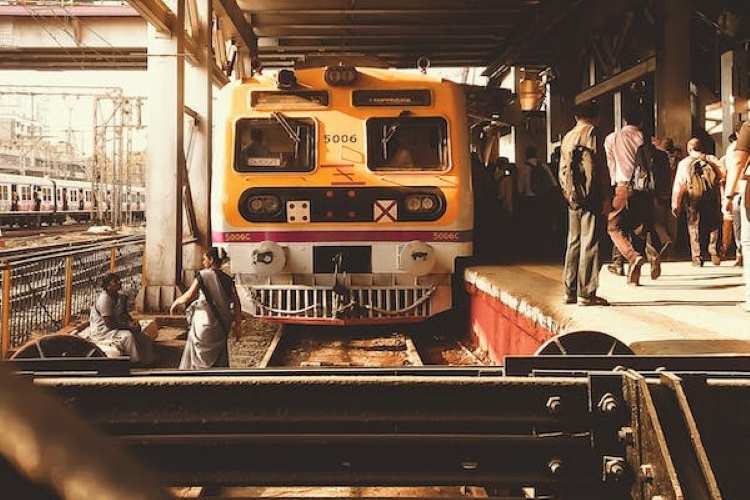
In the worst railway accident of the century, 288 people died in Odisha’s Balasore district last week when three trains collided. Train travel in the country has become much safer, but the latest accident has once again highlighted the lack of basic safety improvements. There have also been concerns over Indian Railways’ prioritisation of high-profile projects like bullet trains over much-needed safety equipment upgrades. Although the government has ample funds and resources to address issues with the existing mechanism, it chooses to allocate a large portion of these resources to launch new projects.
The accident has been attributed to derailment and signal failure due to the computer-controlled track management system, which directs a train from one track to another. The last railway accident of this magnitude occurred in 1999 when 285 people died after the Avadh Assam Express from New Delhi collided with the Brahmaputra Mail. That incident was also caused by a signalling error. Recent available data indicates a significant decrease in derailments over the past few decades. In the 2000s, there was an average of 475 derailments per year, but by 2021, that number had fallen to 50, according to a paper presented by railway officials at the World Congress on Disaster Management.
READ | Delayed Census 2021: Absence of population data may hinder informed decision making
The question arises: in a country where Indian railways is the lifeblood of the economy, did no one alert the railway ministry about the impending disasters? In February of this year, a senior railway officer had raised serious concerns about the signalling system in a letter to key bureaucrats. Even though a similar disaster was narrowly avoided recently in Mysore, no attention was paid to fixing the signalling system, which sometimes changed a train’s route after it had already followed the correct signals displayed on the station master’s panel.
As is often the case with Indian bureaucracy, red tape and a lack of will are squarely to blame for the situation. Additionally, the packed rail schedule makes it difficult to secure blocks of time for repairs.
Safety issues in Indian Railways
A recent audit by the Comptroller and Auditor General of India (CAG) reveals that 75% of the 217 consequential train accidents between FY2018 and FY2021 were caused by derailments resulting from a lack of track maintenance. Track inspections have not been given priority either. The aforementioned CAG report also highlights a shortfall of 30% to 100% in required inspections. The amount allocated for basic track maintenance and other safety measures has been decreasing. The report also states that less money is being allocated for track renewal work, and officials have not even spent the full amount allocated.
The railways also face a staffing problem, with a staggering 312,000 vacancies in the sector. In the safety category, nearly half of the positions are vacant in the Central Railway. These vacancies include operation and maintenance staff such as inspectors, drivers, train examiners, and shunters.
While the government has been launching new trains at a rapid pace, safety measures have seen budget cuts. In this year alone, until April 12, the government introduced six Vande Bharat trains. However, the dedicated safety initiative of the railways, the Rashtriya Rail Sanraksha Kosh (RRSK), reduced spending on track safety. The allocation decreased from Rs 96.07 billion in FY2019 to Rs 74.17 billion in FY2020. Furthermore, the allocated funds were not fully utilised.
Railway officials emphasise the need to view the current incident with utmost seriousness and take immediate corrective actions to rectify system faults. Steps must also be taken to address the staff’s tendency to take shortcuts, which can lead to major mishaps.
Railways’ journey towards passenger safety
Every day, over 20 million passengers use Indian Railways network, with many being migrant workers. While the Modi government has significantly increased the railways budget this year compared to when it took charge, most of the focus has been on improving speed and comfort, rather than accident prevention. India has a fleet of over 13,000 older trains that require upgrades and better safety mechanisms.
To enhance railway safety, the Indian government must prioritise regular maintenance, inspections, and upgrades of railway infrastructure, including tracks, signalling systems, bridges, and tunnels. This will ensure their integrity and minimize the risk of accidents. The country can also learn from developed nations to improve travel safety.
The United States boasts the world’s largest railway network. One area where India falls behind its US counterpart is comprehensive derailment prevention and investigation training, which is regularly conducted to reduce railroad accidents. However, the US is also continually improving its railway system, and it is important to note that the country is not completely accident-free.
The government should also accelerate the deployment of safety-focused technology. In March 2022, Railways Minister Ashwini Vaishnaw demonstrated a high-tech Automatic Train Protection System called Kavach. This system prevents trains from passing a red signal and avoids collisions. It also activates the train braking system automatically if the driver fails to control the train within speed restrictions. Therefore, two locomotives equipped with functional Kavach systems can avoid collisions.
The government aimed to implement this technology on at least 2,000 km of railway tracks in the last fiscal year.
